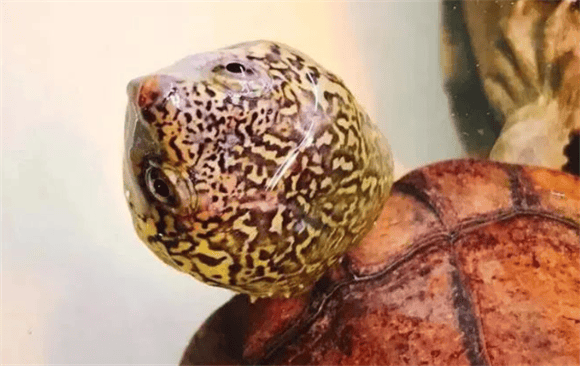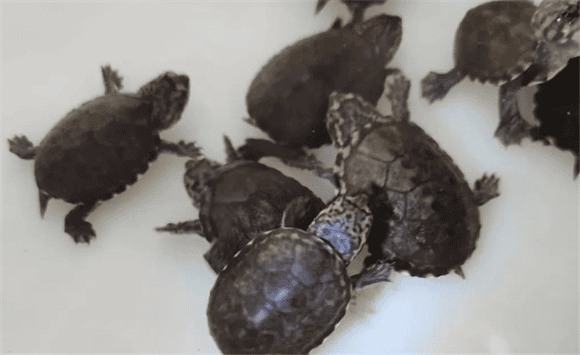Mexican turtle, scientific name Kinosternon integrum, English name Mexican Mud Turtle, is a beautiful small turtle.
The adult body length is about 17-20 cm, and the male is slightly larger than the female.
They have oval bodies and beautiful body colors, especially the complex patterns on their heads that are the most eye-catching.
Although this turtle is native to Mexico, it is also attracting more and more attention in our country.
If you also like this small and exquisite turtle, let us take a look at the key points of its care.

01
Mexican turtles have the characteristics of typical turtles - oval body and movable of plastron.
Their carapace color is usually yellowish brown or greenish brown, and their body color is very beautiful.
The hatchlings will also have obvious keel protrusions and symmetrical black spots on their carapace.
These will gradually disappear with age and become a smooth adult carapace.
Another distinctive feature is the gorgeous pattern on the head, which is also the origin of the nickname "tiger turtle".
The pattern on the head of the Mexican turtle is composed of green or yellow worm-like lines, which is very bright and eye-catching. Such head markings may not be obvious when they are young, but they will become more complex and lush as they grow.
The Mexican turtle was first introduced to China in 2019, and it can be said that it is still a niche new pet.
At present, most domestic populations come from the wild, and individuals often have irregular black markings on their carapace.
Under artificial breeding conditions, the carapace of Mexican turtles will be more uniform and bright.
Due to the short time, this small turtle breeding group is full of surprises and discoveries.
As its name suggests, the Mexican turtle is mainly distributed throughout Mexico.
It likes to live in still water areas, especially in the soft mud at the bottom of the water, and rarely goes ashore.
In the wild, Mexican turtles mainly feed on molluscs, crustaceans, algae, etc. They have a gentle personality and are not too shy. If they are raised from an early age, they will form good interactions with their owners.
02
The Mexican turtle is not very sensitive to temperature, and the ordinary room temperature in the south can meet its growth needs.
The water temperature should be kept at 22-28°C.
The water quality should be kept clean and the water should be changed at least once a week.
The water level should be appropriate, not too deep, especially for turtle seedlings, shallow water of 2-3 cm is better.
You can set up some obstacles to allow them to crawl. It is necessary to provide a land area for them to go ashore to bask in the sun and move around. Some plants can be placed on the shore as cover.
The Mexican turtle’s native climate is warm, but it can also survive the winter at lower temperatures.
In southern my country, it can spend the winter directly in cold water in outdoor ponds. Of course, heating can also provide a more comfortable environment if conditions permit.

Mexican turtles are small in size but have strong reproductive capabilities, and can give birth to more than 10 turtles each time.
However, the hatching rate is generally not high under natural conditions, so artificial cultivation methods are needed.
At present, the artificial hatching technology of Mexican turtles has been mastered, which greatly improves the hatching rate.
The above briefly introduces the relevant situation of Mexican turtles.
This is a beautiful, docile, and highly reproductive small pet turtle.
I hope it will be helpful to the majority of climbing enthusiasts.
If you decide to keep Mexican turtles, make sure to provide them with a good living environment and feeding conditions.

 扫一扫微信交流
扫一扫微信交流
发布评论